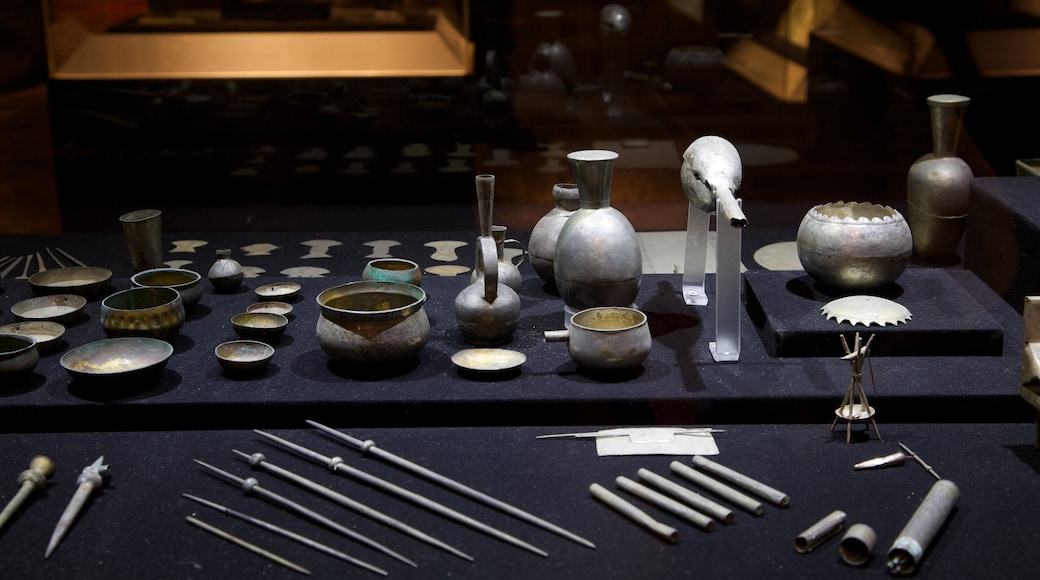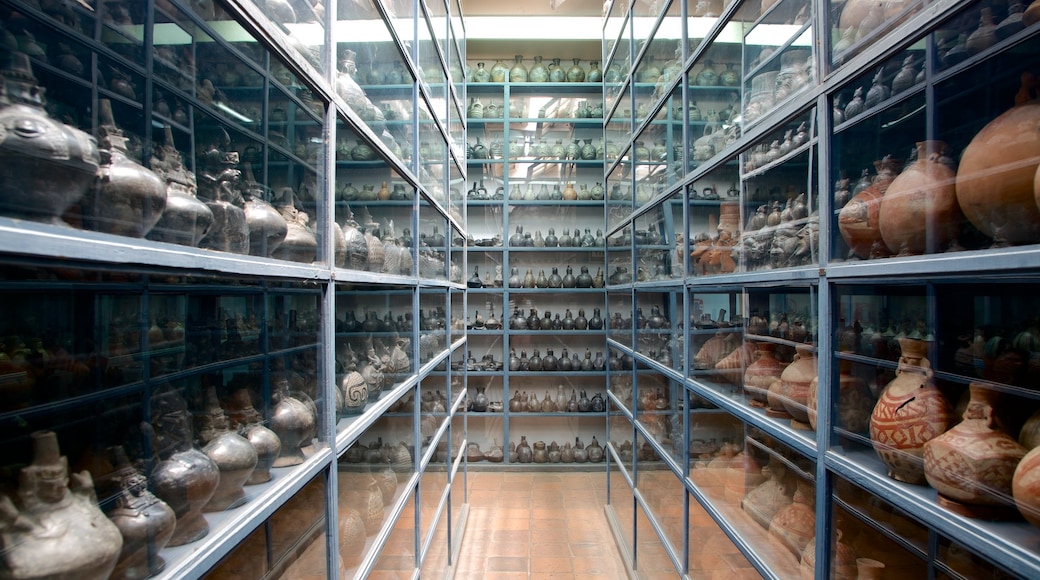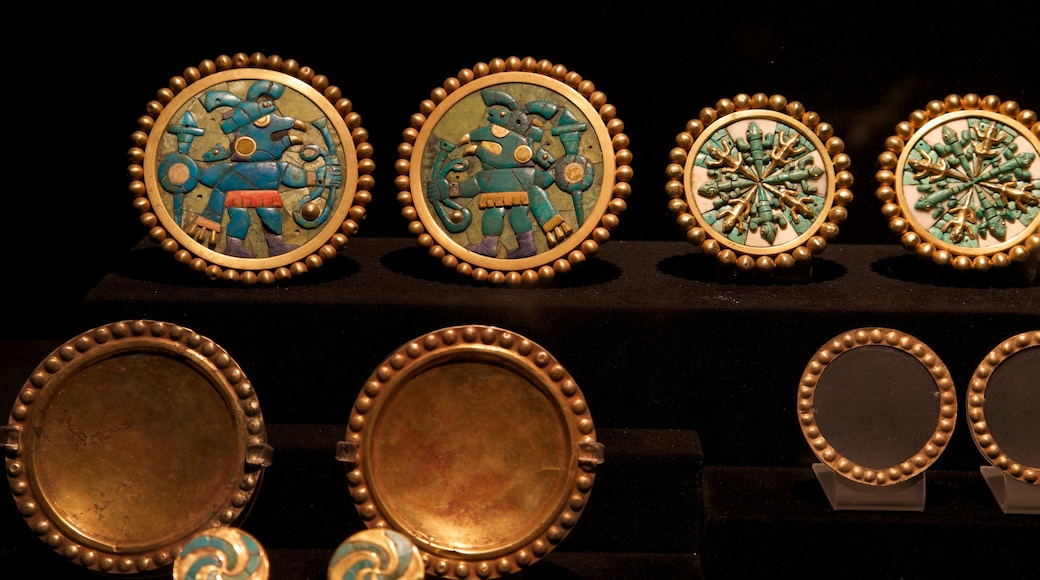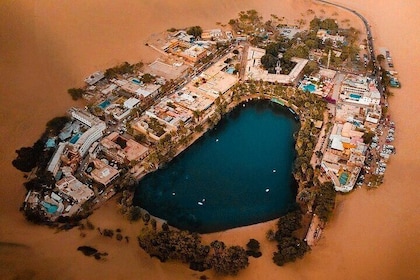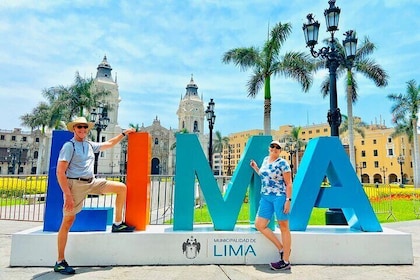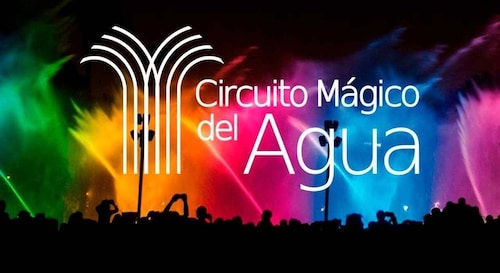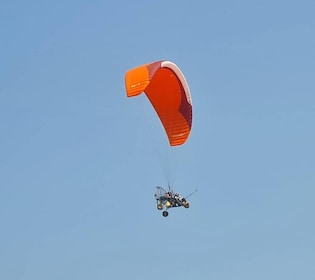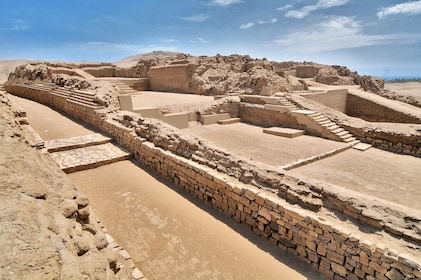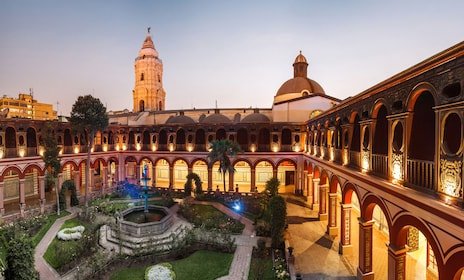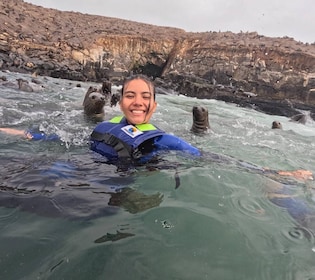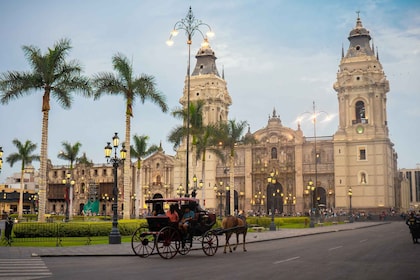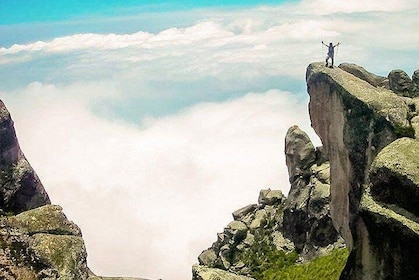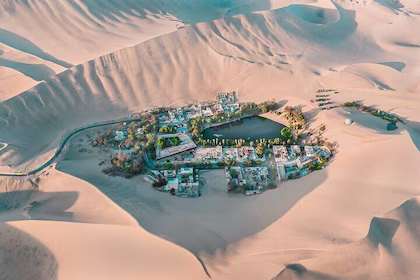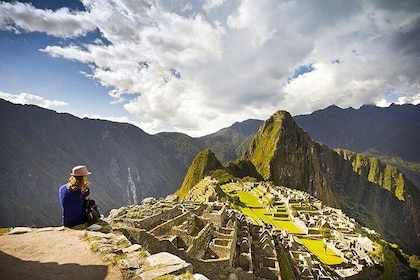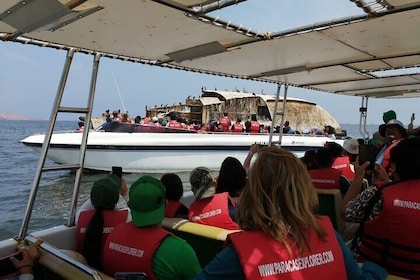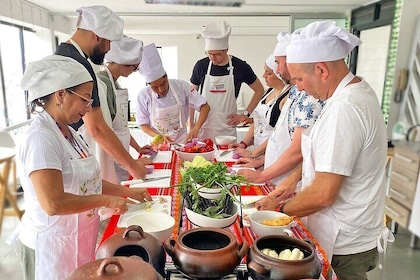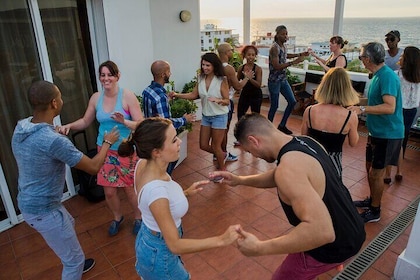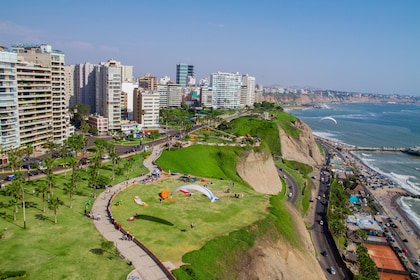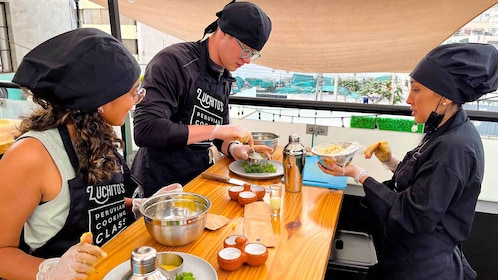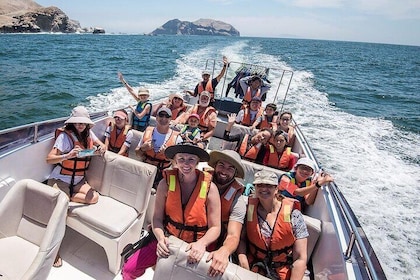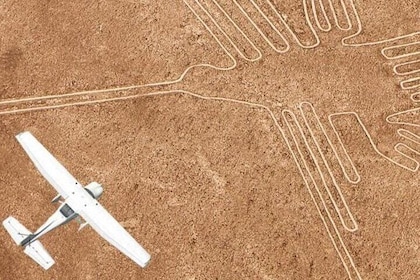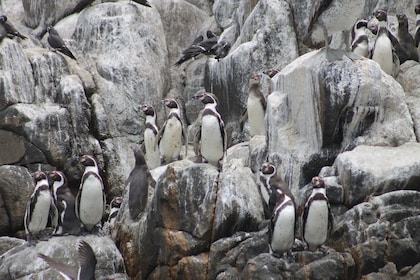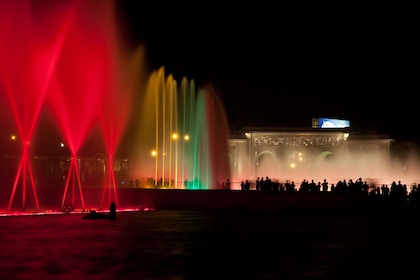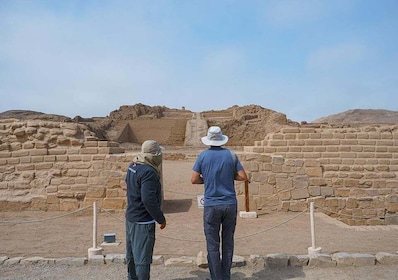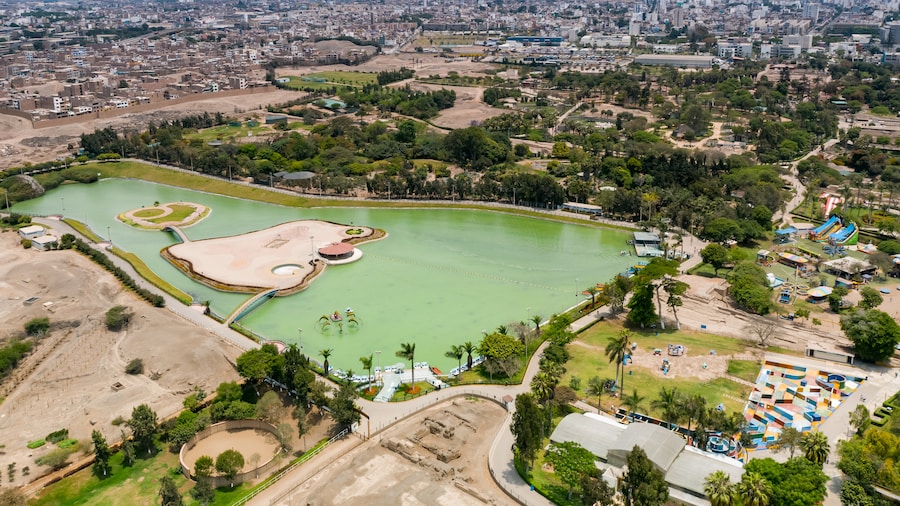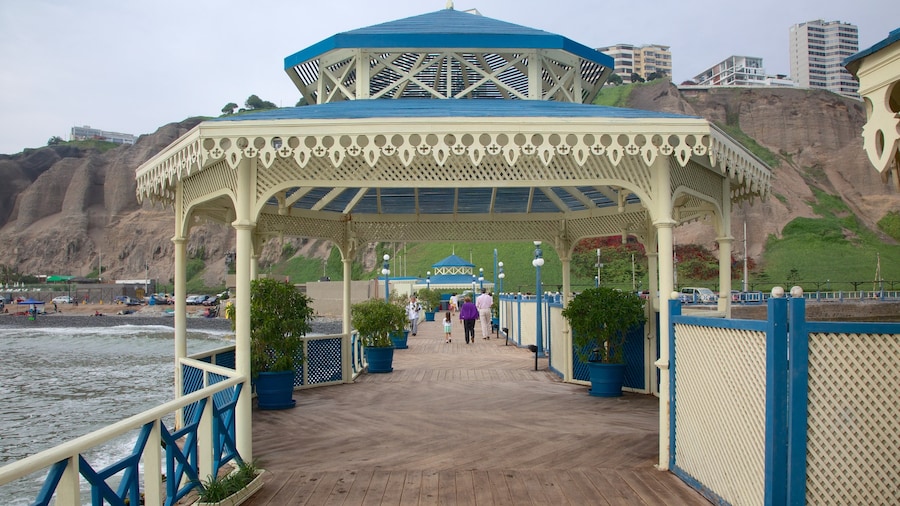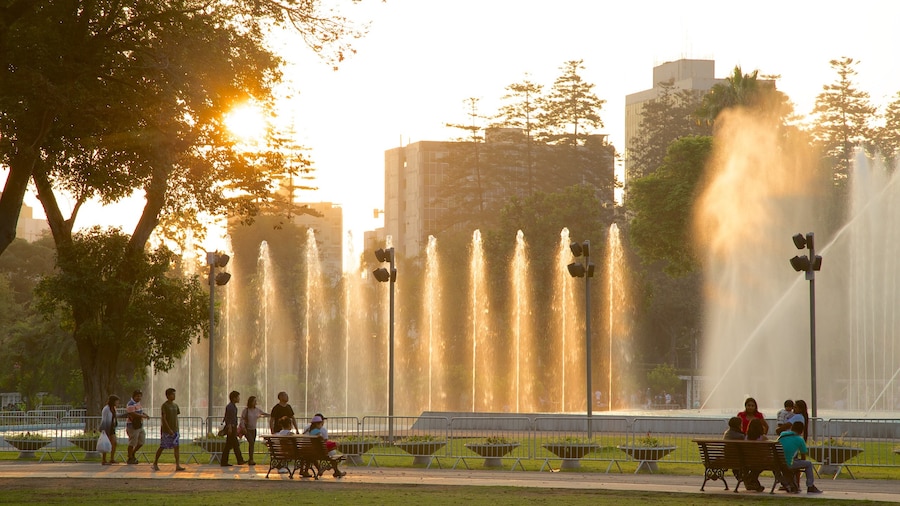Discover treasures from 10,000 years of Peru’s pre-Columbian history, including a large collection of erotic pottery, in this museum built on a 7th-century pyramid.
The Larco Museum showcases treasures from ten millennia of Peru’s rich history before the arrival of Spanish settlers. The exhibit halls are packed with surviving remnants from the lives of indigenous groups, such as the Moches, Chimus, Nazcas and Incas. The museum is located in an 18th-century mansion, which sits on top of a pre-Columbian pyramid. Its most famous feature is the collection of erotic pottery from Ancient Peruvian cultures.
Browse the museum’s temporary and permanent exhibitions. The museum claims to hold the largest collection of erotic pottery in the world. Examine enlightening ceramic models depicting sexual behaviour in indigenous South American peoples from thousands of years ago. They were made in the 1960s by the Peruvian artist Rafael Larco Hoyle after extensive research on the sexual habits of pre-Columbian groups.
See the collection of treasures in the Gold and Jewellery Gallery. This permanent exhibition displays the precious ornaments that adorned rulers of these ancient societies. Imagine how they would have looked with these nose rings, crowns and masks. Uncover 10,000 years of Peru’s history in the Cultures Gallery. It is divided into four parts by geographical location. Take a guided tour in English of the museum.
Walk around the museum’s well-kept garden, which is full of colourful flowers. Relax in the serene and tranquil grounds. Dine at the site’s restaurant with a charming view of the garden. Peruse the museum’s gift shop for replicas of the models on display in the exhibitions.
The museum is named after Rafael Larco Herrera, who started this collection of ancient artifacts. Its first opening day coincided with Independence Day in 1926. It is open daily from the morning until the night. There is a reasonable entrance fee.
The Larco Museum sits in the Pueblo Libre (Free Town) region in the southwest of the city. Take a bus to the stop along Mariano Cornejo and walk a few blocks south to the museum. You can take a taxi from the town centre, which should take around 15 minutes. Near to the museum is a large park that incorporates a zoo and botanical gardens, called Parque de las Leyendas (Park of Legends).
